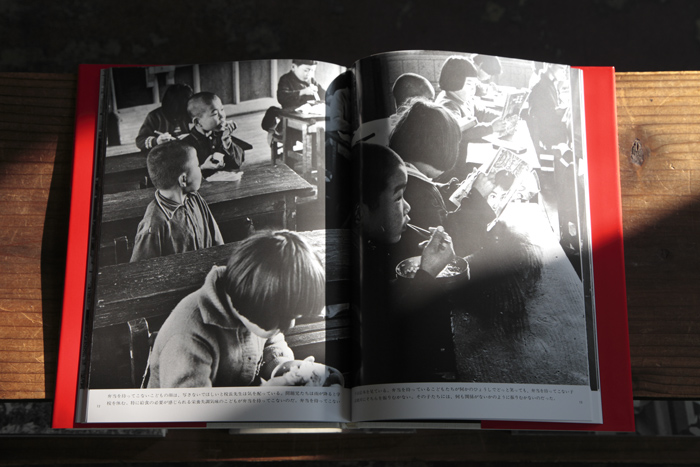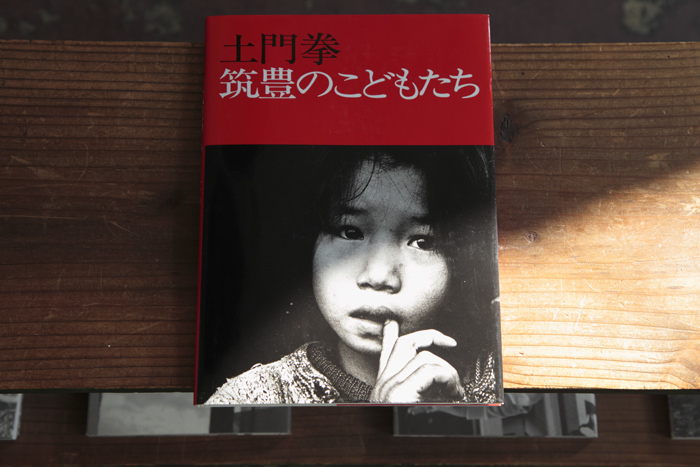筑豊のこどもたち
 PHOTOGRAPHY BY KAZUO MINATO
PHOTOGRAPHY BY KAZUO MINATO
- No.008
- “Chikuho no Kodomotachi” Ken Domon Tsukiji-Shokan
- TUESDAY, 16th JULY, 2013 by Yoshiyuki Morioka
This book is known as a classic capturing the harsh realities in the coal mines of Chikuho through the expressions of children. Since it's publication in 1960, it has been serialized many times, unlike other photograph collections. The current version is hardcover, but its original version was very raw, at the price of 100 yen and bound in bamboo with coarse pages stapled together.
In the words of Ken Domon, the author: “I wanted to make just this photograph collection on coarse paper and not photogravure paper. I wanted to express a familiarity to people where they could round it up and carry it in their hands.”
Ken Domon is known as a master in the photography world who established Photorealism. During the war he photographed for foreign propaganda magazines and national informational magazines. He was in charge of the job of glorifying the war and sending the youth to the battlefield. In regard to this point, editor Akira Hasegawa speculates in his book “Shashin Wo Miru Me—Sengo Nihon No Shashin Hyogen” (his library of photographs): “although Domon isn't officially criticizing himself, he realized that what his pre-war coverage photographs were lacking most was realism, and devoted himself to realism as his own way of taking responsibility for the war.”
Domon suffered a brain hemorrhage from exhaustion in collecting photographs for the collection and is paralyzed on the right side of his body. However, his persistence in this book is amazing: he was said to have exchanged his opinions with the editor in writing from his hospital bed about the captions and selection of photographs. Especially when I look at the photograph, “The Lunchless Child”, it's heart-wrenching.
“Even if children with lunches are bursting out laughing on some kind cover, the lunchless child never looks their way.”
The picture captures the feelings of a girl with no way out who just keeps on reading her picture book.
Ken Domon lost his own daughter when she was a child. Domon's wife was said to have commented, “I feel our daughter somewhere in the photographs of the children.”









